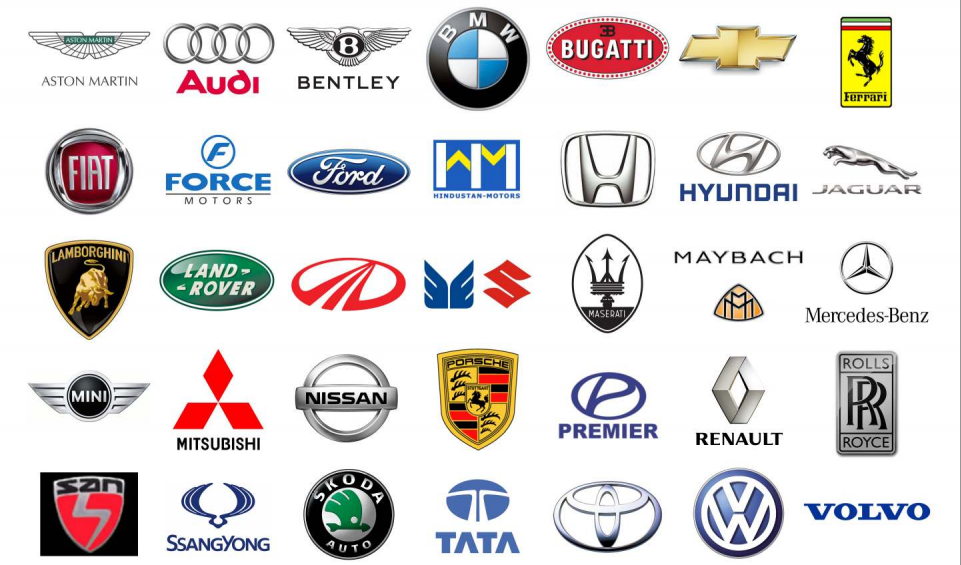INTRODUCTION
Yes, we are all aware of the famous phrase “valuation is an art and not science” but how sincerely do we follow it. When it comes to valuation the entire focus immediately shifts to our most loveable friend who comes to our rescue, yes you have guessed it right our very own “Excel Worksheet or Real Template ready with us”. The moment the activity commences our dear friend is dumped with figures from all over that target financials examining the past trends, how it plays with the comparables, then building the related valuation models, throwing in the valuation factors – multiples, adjusted multiples, weighted average cost of capital, beta and so on and then press “Enter” with the question ok buddy now tell me the value and voila there it is!. That’s about it period may be a change 5% above or below and the limit for negotiation is set. Wait a minute lets rewind – ok we have the numbers, we have the projections, we have the industry outlook and we have the factors for valuation and we have the value case closed, but what we’ve done is played the role of a scientist and never took the opportunity to justifiably recognize lead role of the “artist”. Did we pause to think about the Management style of the Target entity that adapts to the dynamic changes that eventually results in the flexibility of the business to deliver in rapid or dynamic changes in scenarios? For instance have they focused on building capacities only or have they made their capacities flexible in adapting to the foreseeable changes e.g. in case of automobiles lot many components are being shifted to plastic from steel or aluminum which primarily is due to the reason to establish as cost effective in a highly competitive industry and all those not foreseeing such changes are definitely to lose out of the race. Though we do conduct due diligence wherein we execute the “Technical Diligence” that frankly is focused on the health and efficiency of the existing infrastructure rather than the adaptability of such infrastructure. This could be a significant factor in evaluating the management style that throws open the qualitative factor to be factored in the valuation so as to conclude the lead role of the “artist”. Yes, we all though are aware of the fact that valuation at the end is that “magical number” but the approach adopted to arrive at that number will to an extent dawn the role of a “scientist” but beyond which becomes significant to reflect the role of an “artist”.
INDIAN AUTO INDUSTRY IN BRIEF
Let us explore the potential for examining the significance of qualitative factors in a particular industry. From amongst the various industries, we have considered “Auto” industry and precisely the “Auto Component” sub-industry.
As for the scenario for Indian Automobile industry, it is the seventh largest in the world, has demonstrated a phenomenal growth. The industry has grown significantly over the last ten years, during which volumes have increased by 3.2 times, from a level of 4.7 million to 14.9 million, according to Vishnu Mathur, Director General, Society of Indian Automobile Manufacturers (SIAM). The industry, by virtue of its deep, connects with several key segments of the economy, occupies a prominent place in the country’s growth canvas. It exhibits a strong multiplier effect and has the ability to be the key driver of economic growth. A robust transportation system plays a key role in the country’s rapid economic and industrial development, and the well-developed Indian automotive industry justifies this catalytic role by producing a wide variety of vehicles, which include passenger cars, light, medium and heavy commercial vehicles, multi-utility vehicles such as jeeps, scooters, motorcycles, mopeds, three wheelers, tractors etc. The automobile sector in India has been experiencing significant growth in the last few years on the back of factors that include:
- Favorable demographic distribution with rising working population and middle-class Urbanization
- Rising affluence of the average consumer as per capita income rises – According to McKinsey, the middle class in India will grow from 50 million to 550 million by 2025. With a tremendous growth in wealth as the economy grows, there will be significant increases in spending on discretionary items and consumer durables
- Increasing disposable incomes in rural agro-sector
- Overall GDP growth, with a rise in industrial and agricultural output
- Introduction of ultra-low-cost cars
- Increasing maturity of Indian original equipment manufacturers (OEMs)
- Availability of a variety of vehicle models meeting diverse needs and preferences – robust production
- Greater affordability of vehicles
- Easy finance schemes
- Favorable government policies
India’s automobile industry, currently estimated to have a turnover of US$ 73 billion, accounts for 6 percent of its GDP and is expected to hit a turnover of US$ 145 billion by 2016. The automobile industry currently contributes 22 percent to the manufacturing GDP and 21 percent of the total excise collection in the country, according to Mr. Praful Patel, Minister, Heavy Industries, and Public Enterprises. In 2010-11, the total turnover and export of the automotive Industry in India reached a new high of US$ 73 billion and US$ 11 billion respectively. The cumulative announced investments reached US$ 30 billion during this period. He also said that the forecasted size of the Indian Passenger Vehicle Segment is nearly 9 million units and that of 2 wheelers, close to 30 million units – by 2020. India achieved the position of the top growing passenger car market in the world during the January-June period in 2011, overtaking the US, which grew at 14.40 percent, (Source: SIAM). In passenger vehicles, India was the fastest growing market at 18.20 percent during the six-month period. India’s automobile industry is expected to grow by 11 to 13 percent in the fiscal year ending March 2012, according to Pawan Goenka, President, SIAM. The industry body said that Indian automakers sold 143,370 cars in June 2011. The four-wheel passenger vehicle market has grown impressively at the hands of the new middle class, and there is a huge opportunity, as market penetration remains low. India’s automobile industry is growing fast, but two-wheelers remain a dominant category. More than 78 percent of motor vehicles on the road are two-wheelers, their popularity is driven by low price, high fuel mileage, and an ability to drive efficiently through dense traffic. The share of different types of vehicles during 2010-11 was passenger vehicles (16.25), commercial vehicles (4.36), three-wheelers (3.39), and two-wheelers (76.00).
With the gradual liberalisation of the automobile sector since 1991, the number of manufacturing units in India has grown progressively. Currently, 100 percent Foreign Direct Investment (FDI) is permissible under automatic route in this sector including passenger car segment. The import of technology/technological up gradation on the royalty payment of 5 percent without any duration limit and lump sum payment of US$ 2 million are also allowed under automatic route in this sector. The automobile industry is de-licensed, and import of components is freely allowed. With an objective of accelerating and sustaining growth in the automotive sector and to steer, coordinate and synergise the efforts of all stakeholders, the Automotive Mission Plan (AMP) 2006-2016 was prepared. The plan aims at making India global automotive hub. The AMP 2006-2016 aims at doubling the contribution of the automotive sector in GDP by taking the turnover to US$ 145 billion and providing additional employment to 25 million people by 2016. In the long term, the government has expressed plans to follow a two-pronged strategy for spurring automotive Research &Development (R&D). The first is aimed at addressing the existing infrastructure gap in the field domain of automotive testing and homologation through the Department’s flagship National Automotive Testing and R&D Infrastructure Project(NATRiP), which is being implemented at a cost of Rs 2,288 crores (US$ 521.5 million), and is expected to be completed by the end of 2012. The second part of the strategy is aimed at leveraging the investments being made in NATRiP facilities for collaborative R&D with the industry, especially for the small and medium enterprises (SMEs) in the auto component space. Further, with the recent announcement of the launch of the National Mission for Electric Mobility and the setting up of the National Council and Board for Electric Mobility, Mr. Patel emphasized on the commitment of the government for early adoption of electric vehicles, including hybrid vehicles, and the manufacturing of these vehicles and their components. The government is considering setting up two automotive manufacturing hubs spread over 10,000 acres each in central and eastern India. The new hubs, aimed at consolidating India’s position as an important destination for low-cost automotive production, will be in addition to the three existing zones — Haryana, Maharashtra and Tamil Nadu.
The automotive industry is at the core of India’s manufacturing economy – India is all set to become one of the world’s most attractive automotive markets for both manufacturers and consumers. The resulting benefits to society, such as economic growth, increased jobs, and stability for families employed by the automotive industry, are significant. The long-term potential for growth of the auto industry is very favorable, on account of low vehicle penetration in the country. As income levels rise and easy finance is available, the industry will continue to see a healthy growth rate. SIAM estimates that the growth of the auto industry in FY12 will be in the region of 12-15 percent. References: Society of Indian Automobile Manufacturers (SIAM), Press Information Bureau, Press Releases, Report by Booz & Company – Revving the Growth Engine India’s Automotive Industry Is on a Fast Track, Automotive Component Manufacturers Association of India (ACMA). (Source: www.ibef.org). Simply put it across- the Indian Auto Industry is set for an amazing growth ride in the foreseeable future with ample opportunities for the end consumer in regard to choices within each segment with the benefit of cost-effectiveness due to highly competitive market with growing participation from foreign players that being the result of liberalization in regulation initiated by the Central Government.
ANALYSIS OF THE QUALITATIVE FACTOR
Firstly let us understand what these qualitative factors mean when we are considering at the Auto Industry specific to auto components manufacturing.
- Strategy: It plays the most significant directly linked to the Management style since it provides a clear direction for the entity. The auto component entities are left with options relating to more and variety of components per vehicle i.e. produce different components which provide a clear direction for sustainable growth. Secondly, they can provide the entire range of the same product to different OEM’s e.g. Mothers sons & Sumi provides the entire range of vehicle wiring to various OEM’s.
- Time Interval: When strategies are made the focus is on long-term sustainable growth which is measured by the return on equity rather than short/medium term achievements focused on increasing the top line in regard to a single product.
- Diversity: This would mean where a single product developed can without material changes be provided to various OEM’s e.g. spark plugs which can be remolded without any substantial process or without setting up facilities specifics to customers.
- Innovation: R&D is the key to such manufacturers. For instance, let’s understand where the OEM has fixed the price for a component the research outcome providing the same durability resulting in cost-effectiveness provides an opportunity for earning a greater profitability for such manufacturers.
Now let’s look at a few companies for purpose of analysis. The source of information is Bombay Stock Exchange (BSE). The entities selected are engaged in the business of manufacturing of auto components. The analysis is based on the first determination of Market Multiple for each of the selected entity and then examining vast difference if any within the multiples across the entities. Lastly to explore the possible reasons for such variation and in turn, relate to our basic question is valuation only about numbers?
All the above entities are engaged in the same business of manufacturing auto components but as evident have various market multiples the first three entities is averaging beyond 20, whereas the rest of the entities the multiples are averaging below 10 which in other words are averaging at approximately 70% lower than the average multiples of the first three entities. With the projected growth in the Auto Industry, it is imperative that auto components manufacturers are at the right place at the right time then whys such vast variations in the multiple? In order to explore the reasons for such variation, one needs to take an example and considering with our previous month’s analysis of RICO let us continue with the same. In the last month’s article, we enumerated the Business Model of RICO giving the details in regard to the areas of Key Partners, Key Activities, Key Resources, Value Proposition and Customer Segments which are considered from the perspective of either streamlining or rethinking by the Management. The following are the some of such areas from the given business model –
All the above reflect the management style which in brief seems to be specific customer oriented, product specific, nondiversification of product base, value enhancement through foreign ventures, and continuing focus on the export market. All these factors seem to have caught the eye of the market thereby impacting their multiple. A different perspective by the Management focusing on the qualitative factors may result as a turnover strategy with the end result of enhancing its multiple in line with the available growth opportunities in this industry.
Conclusion: Valuation is perhaps the most important aspect of M&A deal. More often than not this gets reduced to juggling with the numbers alone neglecting the more subtle aspect of the qualitative aspects and the futuristic outcome of such exercise. What is important may not be apparent and vice versa. Therefore any true valuation has to factor both the numbers and the futuristic intangibles which will eventually get reduced to numbers though not extent visible.




